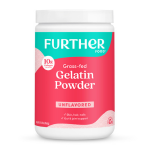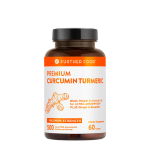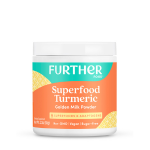- Eat small, frequent meals throughout the day instead of two to three large ones.
- Exercise regularly three to four days per week. Since being overweight can trigger GERD symptoms, it’s important to maintain a healthy body weight. Just make sure to wait at least half an hour after eating before you exercise.
- Don’t lie down until at least three hours after eating. And try to wear loose fitting clothes as often as you can.
- Elevate your head. It’s easier for stomach contents to splash back up when you are lying down, so let gravity do its work. The most effective method is to elevate the bed itself by placing the top two legs of your bed on six- to nine-inch risers or wooden blocks.
Got GERD? This Registered Dietitian Knows Exactly How to Ease Your Symptoms

Do you frequently have heartburn or a sour taste in your mouth? It could be reflux disease. Gastroesophageal reflux disease, more commonly known as GERD, is a condition that occurs when stomach acid or contents come back into the esophagus (the tube carrying food from the mouth to the stomach).
Normally, the lower esophageal sphincter (LES) muscles, which connect the esophagus to the stomach, close tightly to prevent backsplash when food enters the stomach. But sometimes the LES doesn’t work properly, and food or acid comes back into into your esophagus or throat, causing a variety of symptoms.
GERD can develop from smoking, obesity, hiatal hernia, pregnancy, or excess stomach acid. It can also be triggered by eating certain foods or stress. While GERD often occurs in smokers or those who are obese, people of all ages and lifestyles can be affected.
While the most recognized sign of GERD is heartburn, some people with reflux have other symptoms, and not heartburn. Common GERD symptoms include burning in the chest (heartburn), sour taste in the mouth, raspy voice, sore throat, esophagitis (inflammation of the esophagus), regurgitation, and difficulty swallowing.
Not only can GERD be uncomfortable and painful, but if left untreated, GERD can be dangerous to your health. Stomach acid can eat away at the lining of the esophagus, potentially leading to bleeding, ulceration, or in some cases, even cancer. While everyone may experience reflux on occasion, it may be time to see a doctor if you have GERD symptoms a few times a week or if your symptoms interfere with your daily life.
Diet and Lifestyle Changes to Help Treat GERD
The good news is that you can treat and even prevent GERD symptoms through a few diet and lifestyle changes. It’s worth giving these a try so you can hopefully avoid using medication or at least require a lesser dose.
First, watch out for foods that are known to cause reflux: this includes chocolate, spearmint or peppermint, alcohol, coffee, caffeine, red or black pepper, and high fat foods.
Other foods that can be problematic for reflux include tomatoes, garlic, onion, and acidic fruits (e.g. pineapple and citrus).
The list may seem long, but not every food causes GERD for everyone. Our bodies are different, and it’s important to figure out what foods your body doesn’t like. Try using a food journal to identify your personal reactions to food: write down any symptoms that occur after eating. Once you’ve figured out what triggers or aggravates your GERD symptoms, cut out or limit eating that food. It can seem daunting at first, but eventually you’ll realize that although certain foods may taste good in the moment, those 10 minutes spent eating that burger and fries aren’t worth it when you are suffering from reflux-related discomfort hours later!
In addition to dietary changes, there are a few simple lifestyle modifications you can do to reduce symptoms of GERD:
























